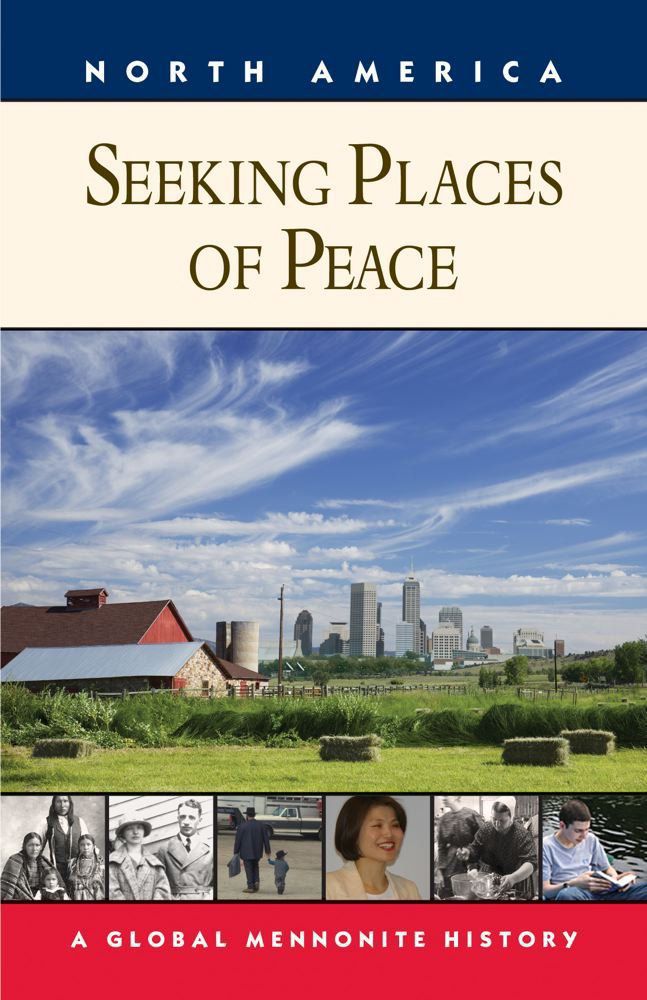 Seeking Places of Peace
Seeking Places of Peace
Review: Seeking Places of Peace: A Global Mennonite History
Review of Royden Loewen, Steven Nolt, and John Lapp (eds.), Seeking Places of Peace: A Global Mennonite History (2012)
Seeking Places of Peace by Royden Loewen and Steven M. Nolt is the fifth and final volume of the Global Mennonite History Series, edited by John A. Lapp and C. Arnold Snyder. This, the North American Mennonite story follows the publication of the Africa and Europe volumes in 2006; Latin America in 2010, and Asia in 2011.
Eminent historians Loewen and Nolt have tackled the herculean task of writing the story of Mennonites and Brethren in Christ in North America in all its ethnic diversity and cultural complexity. The authors construct a sweeping master narrative richly seasoned with local stories and specific actors of a diverse ethnic constituency. To use another analogy, the authors soar high enough to capture a birds-eye view of the multinational church and then descend to capture the color and texture of local communities.
The preface and each of the twelve chapters begin with local narratives that demonstrate the continent’s ethnic and cultural diversity. For example, Maria Lange Becker who migrated from South Russia to Kansas in 1877and Saulo A. Padilla, who migrated from Guatemala to Alberta, Canada, in 1986, introduce the preface. African American Mattie Cooper of Philadelphia’s Diamond Street Mennonite Church and Jake Bolt a retired construction company owner from Abbotsford, British Columbia, both discover they are part of a global Mennonite Family, the theme of chapter twelve.
The narrative is organized in three parts: Settling in North America, 1683-1950; Integrating in North America, 1930-1980; and Growing in North America, 1960-2010. In each part, they strike a balance between Canadian and U.S. Mennonite and Brethren in Christ expressions of faith and life
Especially useful is the analysis of major themes sometimes lacking in historical writing: land stewardship, wealth, rural-to-urban migrations without idealizing either, renewal movements that included not only evangelicalism and neo-Anabaptism (the rediscovery of Anabaptist heritage), but also the depth and legitimacy of communal Old Order spirituality.
Also significant is the overview of the transformation of Mennonites and Brethren in Christ between 1930 and 1980 through mission, service, and peace witness. Mission boards and MCC, while designed to transform and serve others, became agents of transformation for workers as well as the congregations that sent them. The thousands of young adults who served from Vancouver to Vietnam
sharpened the long-held practice and theology of peacemaking and shaped a newly defined concern for justice. Mission efforts at home and abroad reshaped the largely European American church into a many splendored multicultural, multiracial people—realizing at least in part the radical new creation inaugurated at Pentecost.
Perhaps the greatest contribution of Seeking Places of Peace is the analysis of Mennonites and Money
in chapter nine. Loewen and Nolt trace another transforming influence, that of the movement from a land-based economy to a cash economy in the second half of the twentieth century. Successful entrepreneurs and business leaders managed unprecedented financial resources that challenged the church and enabled its ministries. Inequity and economic disparity among Mennonites and Brethren in Christ widened challenging the church’s communal identity. On the other hand, gifted leaders like Orie O. Miller, a partner in Miller Hess Shoe Company based in Akron, Pa., and longtime executive of MCC and Eastern Mennonite Missions, helped to channel wealth into a dramatic global expansion of missions, service, and peacemaking.
While a reader may wish for fuller explanations, more details, and the inclusion of more people who helped shape the North American church, one volume cannot contain everything. Given the continent-wide scope of the task, Loewen and Nolt have succeeded admirably and have brought a fitting conclusion to the monumental Global Mennonite History project.